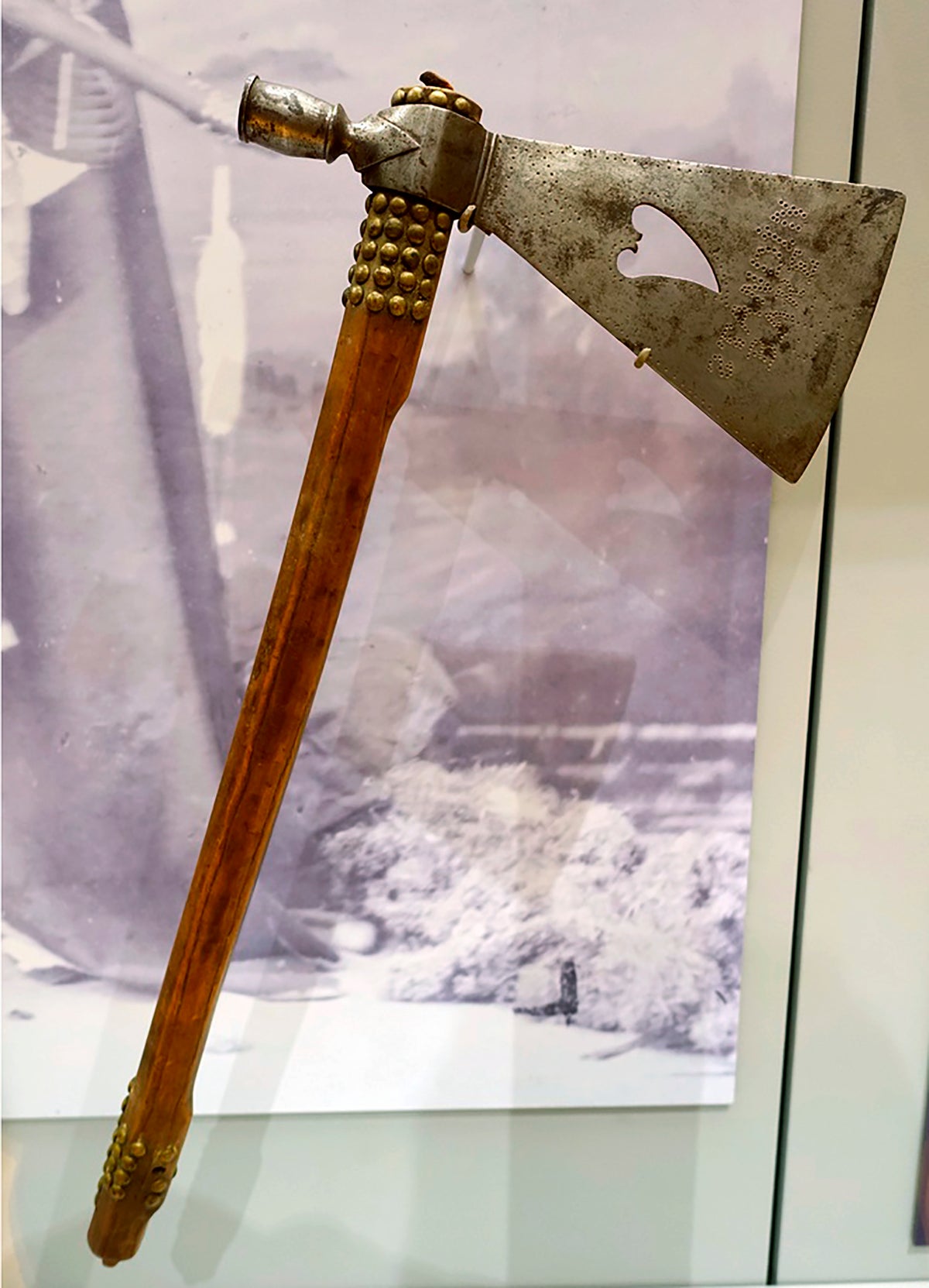
A tomahawk once owned by Chief Standing Bear, a pioneering Native American civil rights leader, has been returned to his tribe after being housed for decades in a museum at Harvard University.
Members of the Ponca tribes in Nebraska and Oklahoma visited the Massachusetts university on June 3 for the ceremonial return of the artifact, the tribes said in a recent announcement.
Standing Bear had originally gifted the pipe-tomahawk to one of his lawyers after winning the 1879 court case that made him one of the first Native Americans granted civil rights.
The tomahawk changed hands several times before being acquired by Harvard in 1982.
“This is a good homecoming and a good step in the many steps we have to do to get back to our identity, to our ways of our people,” Angie Starkel, a member of the Ponca Tribe of Nebraska who made the trip to Cambridge, said in a statement.
Stacy Laravie, a descendant of Standing Bear who is also the historic preservation officer for the Ponca Tribe of Nebraska, agreed.
“We talk about generational trauma, but we don’t talk about generational healing, and that’s what we’re doing now,” she said in a statement. “This is healing.”
Jane Pickering, director of Harvard’s Peabody Museum of Archaeology & Ethnology, said the tomahawk’s return reflects the institution’s desire to repair past harms.
“The Peabody directly benefited from collecting practices that we acknowledge today ignored the wishes and values of families and communities,” she said in a statement.
Harvard and the museum have faced criticism over the pace of repatriating Native American remains and other significant objects to tribes, as required under federal law.
The museum and tribes have been working on the tomahawk’s return for more than a year; tribal members were slated to travel to campus before pandemic-related restrictions last year delayed it.
The Ponca tribes say they will announce plans to exhibit the tomahawk at a later date.
They were among many forcibly relocated from their homelands to other territories by the federal government in the 1800s.
Standing Bear was arrested 1878 for leaving the tribe’s Oklahoma reservation in order to fulfill a promise he made to bury his eldest son back in their tribe’s homeland in Nebraska’s Niobrara River Valley.
In his landmark federal trial, he successfully argued for the recognition of Native Americans as persons entitled to rights and protection under law.







